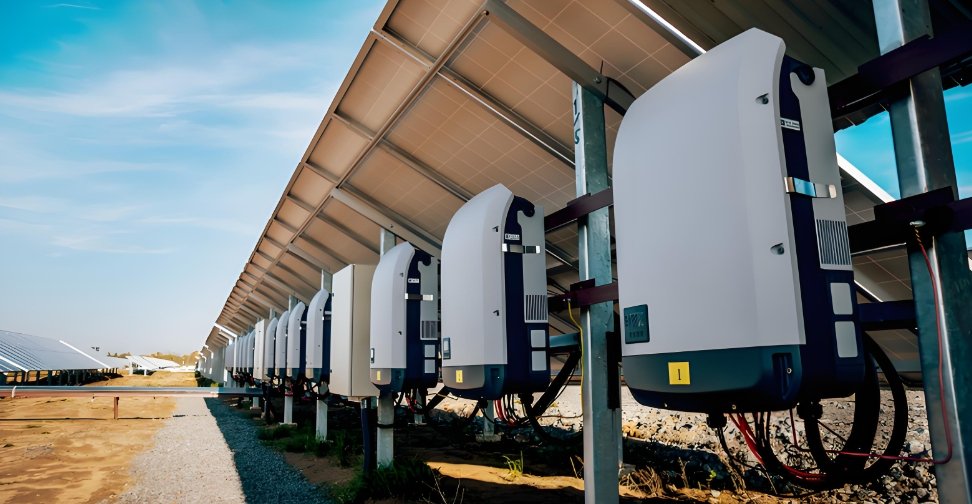Inverters are essential for converting DC into AC power. But did you know there are several types? Let’s dive into what they are.
There are different types of inverters based on their mode of operation, output waveform, and configuration. Let’s explore these key categories.
Understanding the various types of inverters can help you choose the right one for your energy needs. Read on to learn more.
Based on Mode of Operation
Inverters can operate in different modes, such as grid-tied, off-grid, and hybrid. The mode you choose depends on whether you want your system to interact with the grid or operate independently.
Inverters are categorized based on their mode of operation: grid-tied1, off-grid, and hybrid. Each serves a different purpose for your energy setup.
Inverter collegati alla rete
Grid-tied inverters are commonly used in solar power systems that connect to the utility grid. They convert the DC from solar panels into AC, which is then fed into the grid.
Inverter off-grid
Off-grid inverters are used in systems that are not connected to the utility grid. These systems rely on energy storage, like batteries, to provide a constant power supply.
Inverter ibridi
Hybrid inverters combine both grid-tied and off-grid features. They allow for energy storage and can seamlessly switch between the grid and stored energy based on demand.
| Mode of Operation | Descrizione | Pro | Contro |
|---|---|---|---|
| Collegato alla rete | Connects to the utility grid | Low-cost, efficient use of surplus power | Dependent on the grid |
| Fuori rete | Standalone system, no grid connection | Complete energy independence | Requires energy storage (batteries) |
| Ibrido | Combines grid and off-grid functions | Flexibility to use grid or battery storage | Costo iniziale più elevato |
Based on Output Waveform
Inverters are also classified by the type of output waveform they produce: square wave, modified sine wave, and pure sine wave. The quality of the waveform impacts the efficiency and compatibility with your appliances.
Output waveform is another way inverters are categorized. Square wave2, modified sine wave, and pure sine wave all serve different needs.
Square Wave Inverters
Square wave inverters provide the simplest and least expensive form of AC power. However, the power quality is poor and incompatible with many sensitive devices.
Inverter a onda sinusoidale modificata
Modified sine wave inverters are a step up from square wave inverters. They provide better power quality and can operate most devices, but still, some sensitive equipment may not work efficiently.
Inverter a onda sinusoidale pura
Pure sine wave inverters produce the cleanest and most reliable power. They are the best choice for sensitive equipment like computers and medical devices, but they are typically more expensive.
| Tipo di forma d'onda | Descrizione | Pro | Contro |
|---|---|---|---|
| Square Wave | Basic, low-cost output | Cheapest option | Not suitable for most appliances |
| Modified Sine Wave | Improved power quality | Affordable, works for most devices | Not suitable for sensitive equipment |
| Pure Sine Wave | Cleanest, high-quality output | Best for all appliances | Higher cost |
Based on Configuration Topology
Inverters can be further categorized by their internal configuration or topology, such as centralized, string, and microinverters. Each has distinct advantages depending on the size and complexity of your system.
Inverter configuration impacts system design. Centralized inverters3, string, and microinverters4 offer different benefits for both large and small installations.
Centralized Inverters
Centralized inverters are used in large solar power systems where all panels are connected to a single inverter. This setup is cost-effective but can be less efficient if one panel is shaded or malfunctioning.
Inverter di stringa
String inverters are commonly used in medium-sized systems, where multiple panels are connected to individual inverters. This allows better performance and flexibility compared to centralized inverters.
Microinverter
Microinverters are the most efficient type. Each panel has its own inverter, meaning that the performance of one panel doesn’t affect the others. They’re ideal for small to medium systems or installations with shading issues.
| Configuration | Descrizione | Pro | Contro |
|---|---|---|---|
| Centralized | One inverter for multiple panels | Cost-effective for large systems | Single point of failure, less efficient |
| String | Multiple inverters connected to strings | Improved performance, more flexible | Higher installation cost |
| Microinverter | One inverter per panel | Maximum efficiency, independent panel performance | Higher initial cost, complex installation |
Conclusione
Inverters come in various types, each serving specific needs. Understanding these options helps you choose the right one for your energy system.
Note a piè di pagina:
-
Grid-tied inverters allow solar power systems to connect to the utility grid, ensuring efficient use of surplus power but relying on grid availability. ↩
-
Square wave inverters are basic and affordable but produce low-quality power unsuitable for most modern appliances. ↩
-
Centralized inverters are cost-effective for large solar installations but can suffer from single points of failure and efficiency loss if one panel underperforms. ↩
-
Microinverters improve solar system efficiency by enabling each panel to operate independently, ideal for shaded or complex installations. ↩







